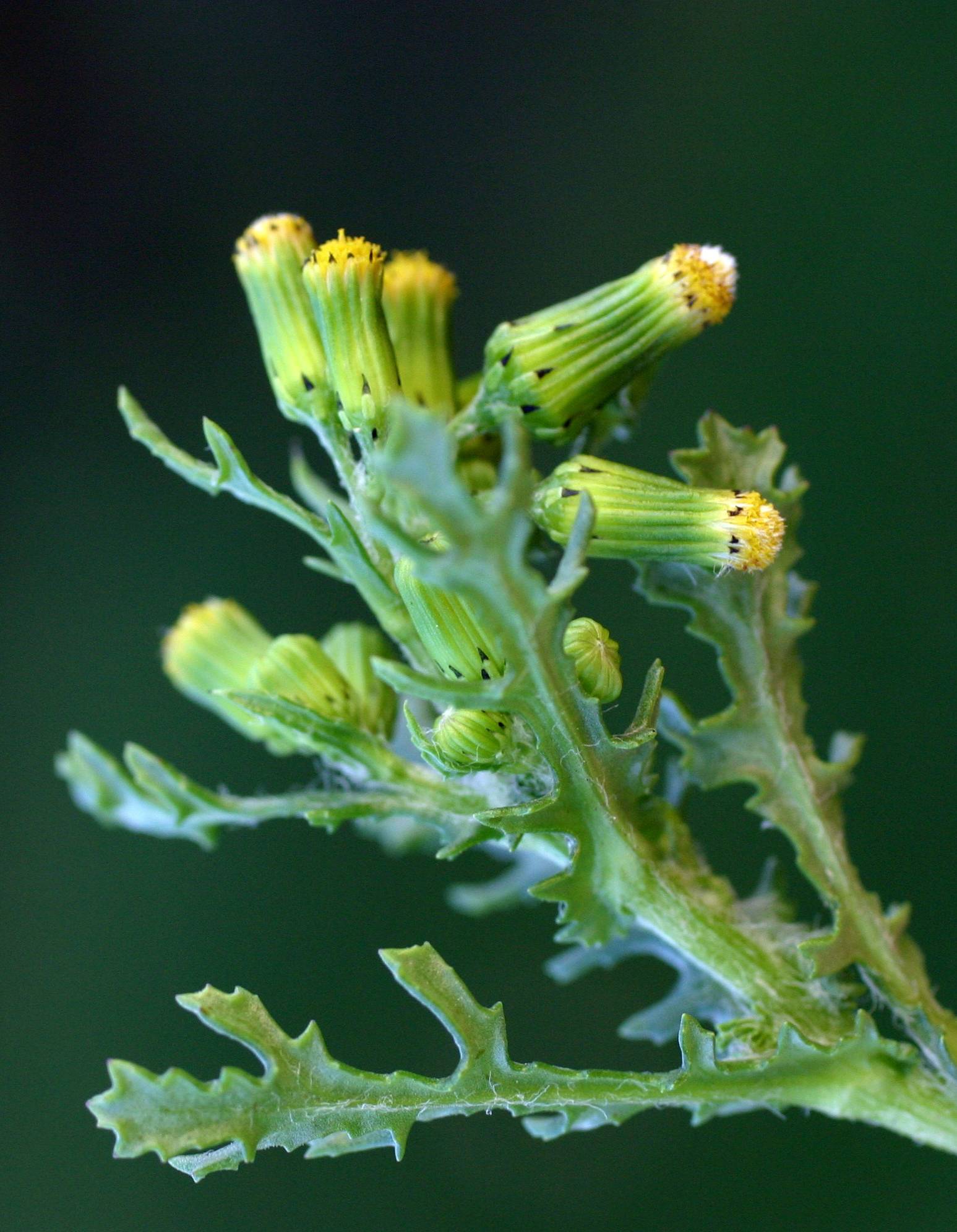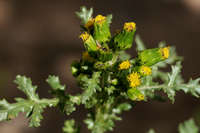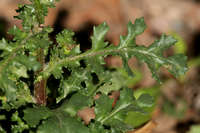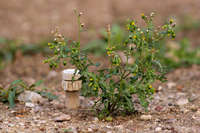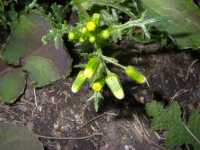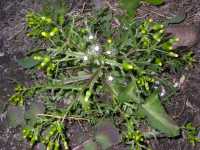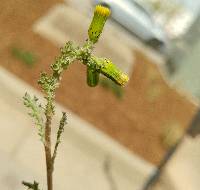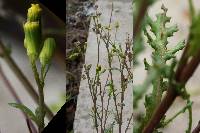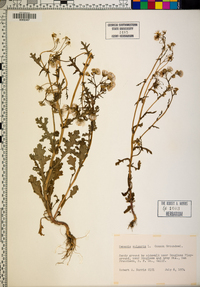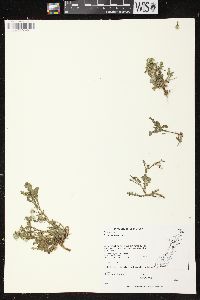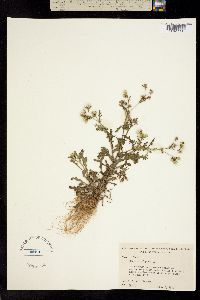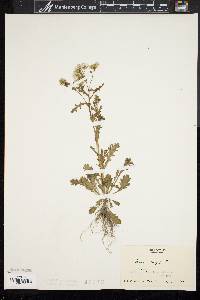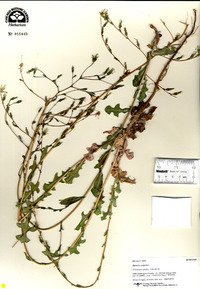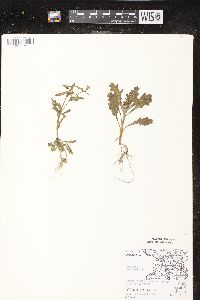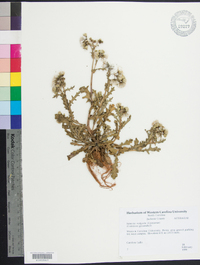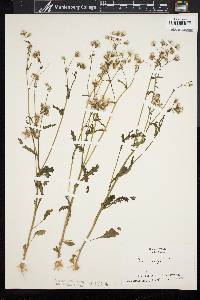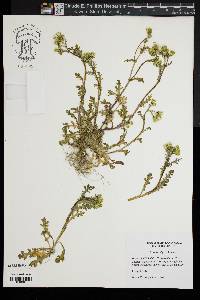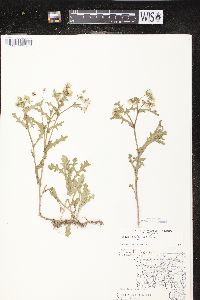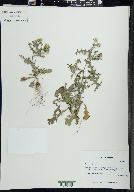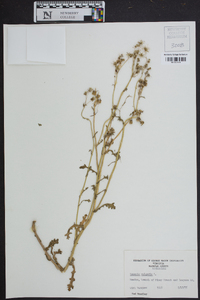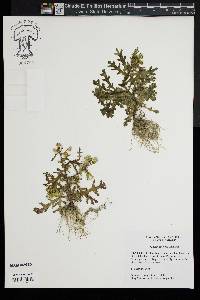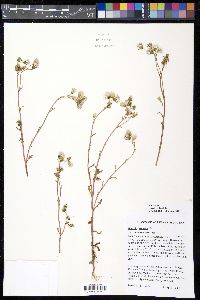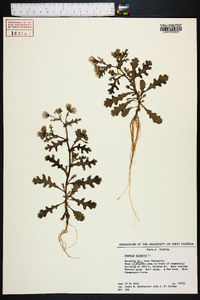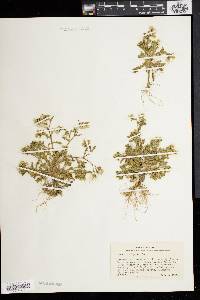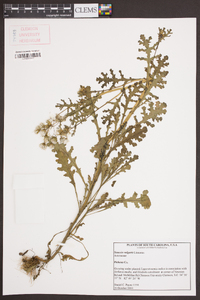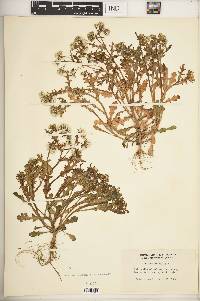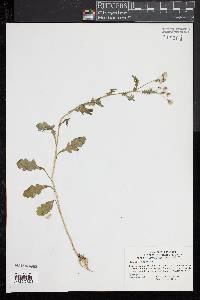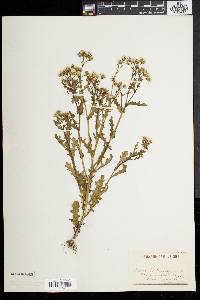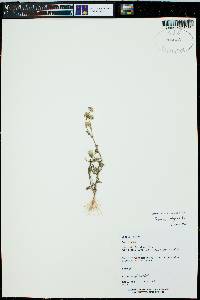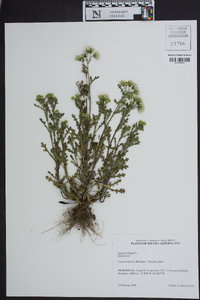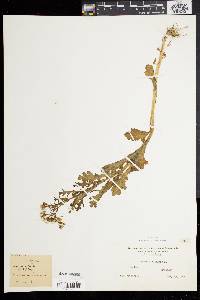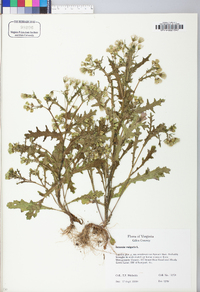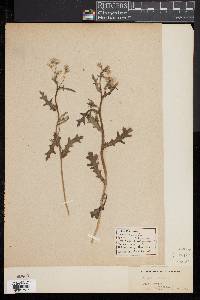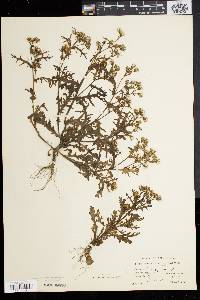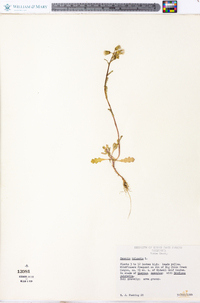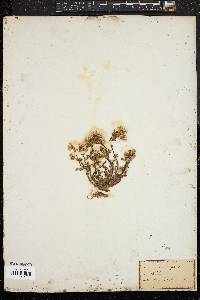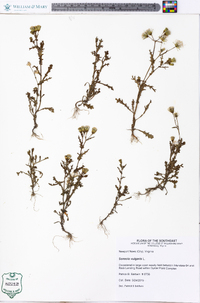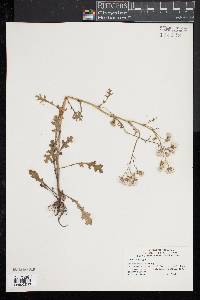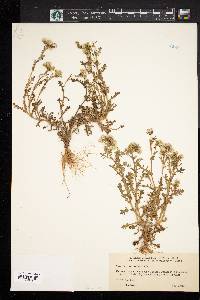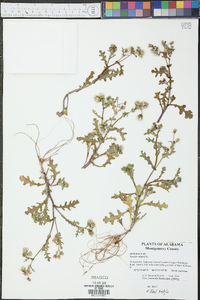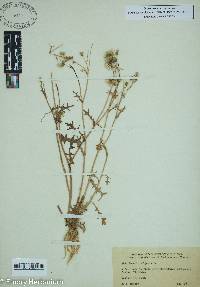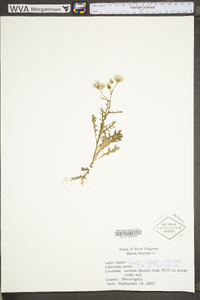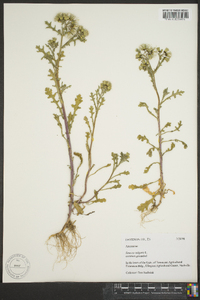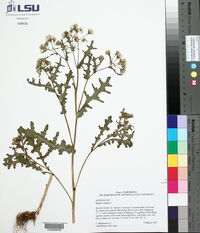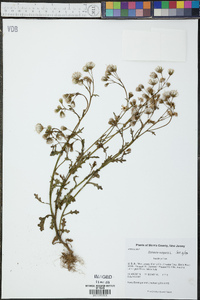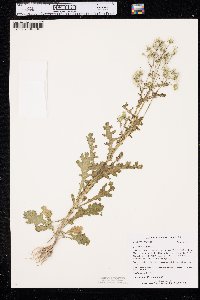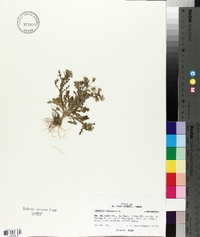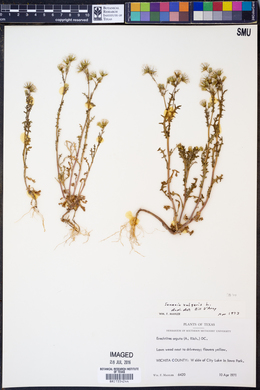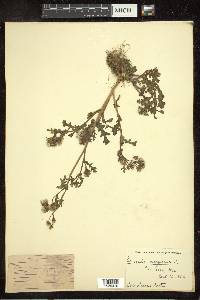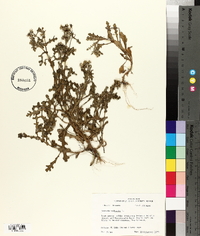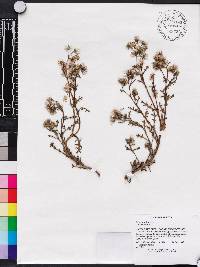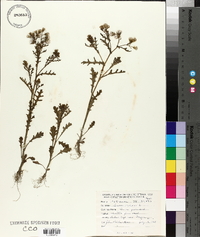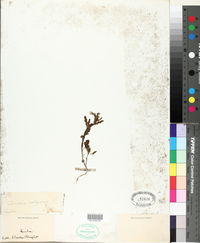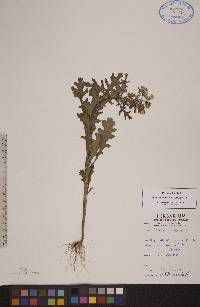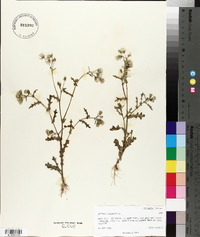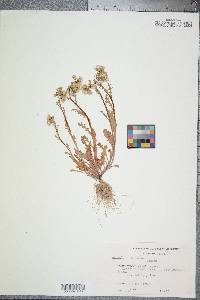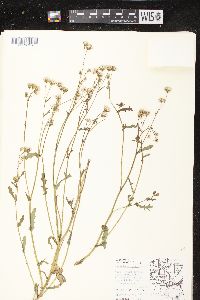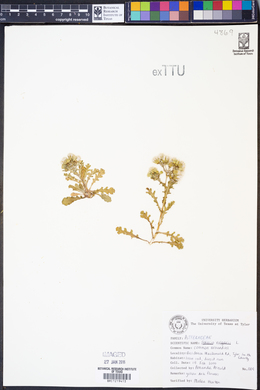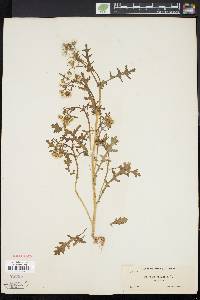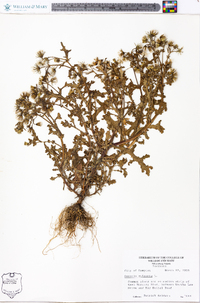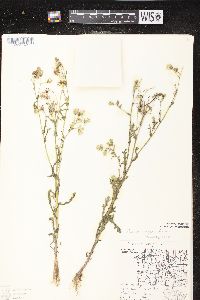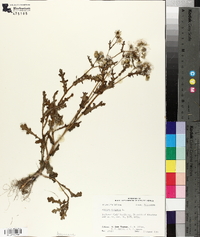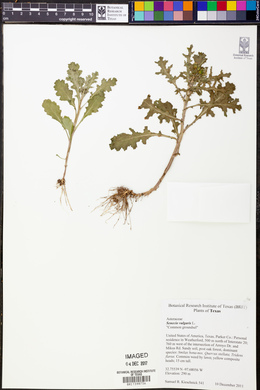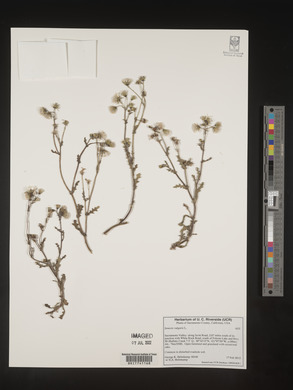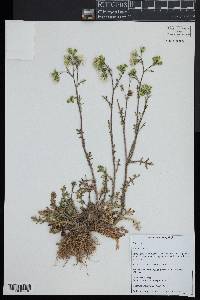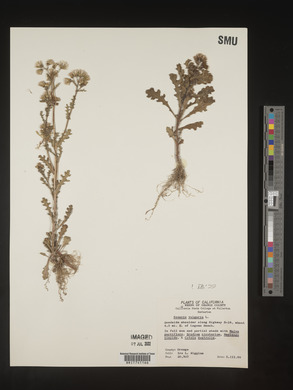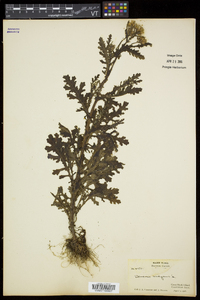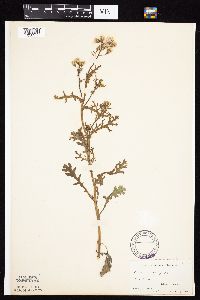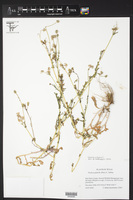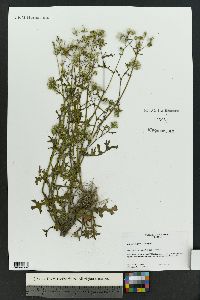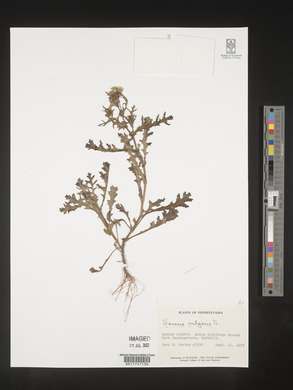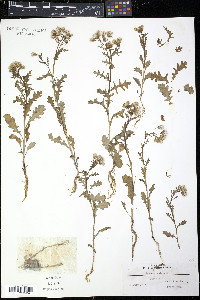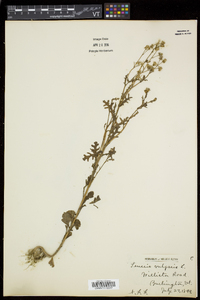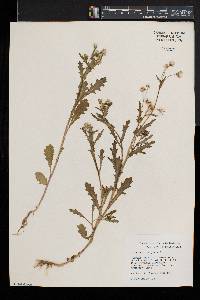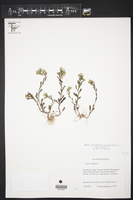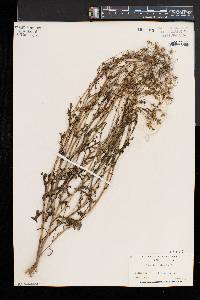
|
|
|
|
Family: Asteraceae
Old-Man-in-the-Spring, more...common groundsel
|
Annuals, (10-)20-50(-60+) cm (taprooted). Herbage glabrous or sparsely and unevenly tomentose when young. Stems usually 1. Leaves evenly distributed; petiolate; blades ovate to oblanceolate, 2-10 × 0.5-2(-4) cm, bases tapered, margins lobulate to dentate, ultimate margins often secondarily dentate to denticulate (distal leaves sessile). Heads 8-20 in loose, corymbiform arrays. Calyculi of 2-4(-6+) bractlets (prominent, black-tipped, lengths about 1 / 4 phyllaries). Phyllaries ± 21, 4-6 mm, tips usually green, sometimes black. Ray florets 0. Cypselae usually sparsely hairy, sometimes nearly glabrous. 2n = 40. Flowering early spring (through summer in far North). Disturbed sites; 1-1000 m; probably introduced; Greenland; St. Pierre and Miquelon; Alta., B.C., Man., N.B., Nfld. and Labr., N.W.T., N.S., Nunavut, Ont., P.E.I., Que., Sask., Yukon; Ala., Alaska, Ariz., Calif., Colo., Conn., Del., D.C., Fla., Ga., Idaho, Ill., Ind., Iowa, Kans., Ky., La., Maine, Md., Mass., Mich., Minn., Miss., Mo., Mont., Nebr., Nev., N.H., N.J., N.C., N.Dak., Ohio, Okla., Oreg., Pa., R.I., S.C., S.Dak., Tenn., Tex., Utah, Vt., Va., Wash., W.Va., Wis., Wyo.; Eurasia. Senecio vulgaris has not been collected in the Canadian Arctic north of Hudson Bay. A widely scattered weed of Eurasian origin, Senecio vulgaris is particularly abundant in southern areas of cool damp winters or northern areas of cool damp summers.
FNA 2006, Trock 2014 (Jepson Online), Kearny and Peebles 1979 Duration: Annual Nativity: Non-Native Lifeform: Forb/Herb General: Annuals herbs, 10-60 cm tall, from a taproot; stems often solitary; herbage glabrous or sparsely and unevenly tomentose when young. Leaves: Alternate and evenly distributed along the stem; lower leaves petiolate and upper leaves sessile; blades ovate to oblanceolate and pinnately lobed, 2-10 cm long by 0.5-4 cm wide, the ultimate margins often dentate to denticulate. Flowers: Flower heads yellow, discoid, arranged in loose panicles of 8-20 heads; calyculi (extra set of bracts below the involucre) of 2-6 black-tipped bractlets much shorter than the phyllaries; involucre (set of bracts wrapped around the flower head) widely cylindric or urn-shaped, 4-6 mm high, the bracts (phyllaries) about 21, all of equal length, with green or black tips; florets 30-65, all discs, the corollas yellow. Fruits: Achenes 2 mm long, often hairy, topped with a pappus of bristles. Ecology: Found in disturbed sites, below 3,500 ft (1067 m); flowers in the early spring. Distribution: Native to Europe, Asia, and north Africa; Introduced throughout the world; found everywhere in North America except the Canadian Arctic north of Hudson Bay. Notes: An annual, widely scattered weed of Eurasian origin. Identify it as a Senecio by its flower heads with yellow flowers and the tidy row of phyllaries all the same length. This species also has a row of short, black-tipped bracts below the flower head, and only disc flowers, no rays. Also distinguished by the mostly hairless stems and leaves, and the low stature of the plant, usually less than 0.5 m tall. Ethnobotany: Unknown, but other species in the genus have uses. Etymology: Senecio is from senex, old man, which refers to the gray hairs on the seeds; vulgaris means common. Synonyms: None Editor: AHazelton 2015 Annual 1-4 dm from a ±evident taproot, leafy throughout, sparsely crisp-hairy or subglabrous; lvs coarsely and irregularly toothed to more often pinnatifid, 2-10 נ0.5-4.5 cm, the lower tapering to the petiole or petiolar base, the upper sessile and clasping; heads several or many, discoid, the fls all tubular and perfect; disk 5-10 mm wide; invol 5-8 mm, with ca 21 principal bracts and some short but well developed, black-tipped bracteoles; pappus very copious, from a little shorter than to equaling or generally surpassing the cors; achenes short-hairy chiefly along the angles; 2n=40. A weed in disturbed soil and waste places; native of the Old World, now widely distributed in n. temp. regions, and throughout our range. May-Oct. Gleason, Henry A. & Cronquist, Arthur J. 1991. Manual of vascular plants of northeastern United States and adjacent Canada. lxxv + 910 pp. ©The New York Botanical Garden. All rights reserved. Used by permission. From Flora of Indiana (1940) by Charles C. Deam first found this species in 1919 on private grounds in the northern part of Muncie, Delaware County. In 1929 I found it to be well established in the west part of Bluffton, Wells County. I revisited the area in 1935 and found that it is spreading. Madge McKee found it in Goodland, Newton County. Thus year after year we add European weeds to our flora and make it necessary to increase our efforts to grow wanted vegetables and ornamental plants. …… Indiana Coefficient of Conservatism: C = null, non-native Wetland Indicator Status: UPL |
|
|
|
This project was made possible in part by the Institute of Museum and Library Services [MG-70-19-0057-19].
Powered by Symbiota

